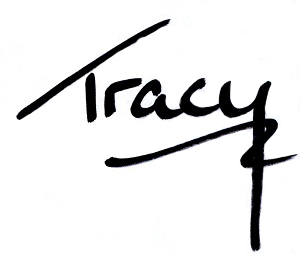
Today in 1629, the Dutch tall ship Batavia was wrecked off the coast of Western Australia, not too far from where I grew up. The photo, above, shows a replica of the Batavia, which was built in the Netherlands and is currently on display in Geraldton, Western Australia…where I grew up.
The survivors of the wreck of the original Batavia were among the first recorded Europeans to step foot in Australia. Their story is tragic.
Some years ago I wrote about diving over the wreck of the Batavia. I thought I’d drop it in here, on the anniversary of the wreck, as the Batavia became part of my personal history.
Diving Over The Batavia
I’ve read fiction where characters scuba dive, usually in a remote, idyllic location like Papeete, or Bora Bora. The author inevitably describes being under the water as “silent”, which tells me they’ve never actually scuba dived themselves.
It isn’t silent, down there. Every breath you draw through your regulator hisses. And with every exhalation, bubbles rush upward in a stream.
But all other noise IS muffled. As your nose is covered by the pressure-molded silicon skirt of your mask, you can’t smell anything, either. That leaves only sight, touch, and taste.
Taste is limited, usually to the mild disinfectant tinge that your mouthpiece imparts as you bite on it and, if you’re unlucky, a trace of whatever fumes the air pump intake picked up when your air tank was filled, because the dive shop pump was too close to the parking lot. Salt from seawater will pickle the inside of your mouth by the end of the dive.
That leaves sight and touch. Sight is…problematic. You’re peering through a tempered glass mask, which adds a nearly imperceptible tilt to your vision. And you’re looking through water, which distorts depth perception and distance. Depending on how much silt the tide and waves are throwing up, you might not see that shark until its shadow moves beneath you on the ridged sand at the bottom.
That leaves touch, which is the only true, direct sense you have down there.
There are a lot of things you should not touch if you want to live to the end of the dive. Cute octopi with blue rings, coral that glows red, fish that look like seashells.
Then there are some things under the water you aren’t legally allowed to touch. Like the wreck of the Batavia, just off the coast of Western Australia. The Batavia was a Dutch East India Trading Company ship bound for Batavia in Indonesia, in 1629. The Dutch were superior sailors and traders and had learned to sail far south of the African continent to pick up trade winds called The Roaring Forties, which would shorten their journey east by many days. Then they would turn north and sail up the Indian Ocean to Batavia.
Only, the captain of the Batavia, Francisco Pelsaert, took too long to turn north and ran right into the Abrolhos Islands just off the coast of Western Australia. The 332 men, women and children on the Batavia were among the first Europeans to set foot in Australia (Dirk Hartog’s ship beat them by a mere thirteen years).
What followed the wrecking of the ship was weeks of mutiny and murder, while Pelsaert sailed for help. When he returned, less than half the ship’s compliment were left. The mutineers were executed, except for two, who were stranded upon the mainland, making them the first European settlers of Australia, pre-dating Captain James Cook’s more famous landing in Botany Bay (Sydney) by over a century.
It’s illegal to touch or take anything from the wreck of the Batavia, which lies in relatively shallow, blue-green water beside one of the islands that makes up the Abrohlos group. But on that day, I did touch it. I waved the seaweed aside, looking for the raw, brine-soaked timber beneath three hundred and fifty years of marine dilapidation and rested my hands on one of the beams still resting on the reef.
Touch. The only true sense, underwater.
Or is it? Because as I rested my hand on the timbers, I could hear the women and children screaming. The crew shouting orders at each other. The roar of the waves that drove the ship onto the reef. The groan and crack of timbers, the flap of wet sails and the tearing sound they made as they came loose from the mast and mizzen and fell into the sea.
That dive took place twenty-four years ago…and I can still feel those timbers against my fingers.
Enjoy!

Only Tracy can write such beautiful homage to shipwrecks and the sea.
Thank you, Monica!
Tracy
I’ve never been on a dive but your description of makes me feel like I was there. That’s what your writing always does for me. So descriptive but not verbose.
Thanks for the “tour” of the Batavia, and some real history of Western Australia.
Thanks, Sandy!
Glad you enjoyed it.
Scuba diving is a strange activity. The reality of it just can’t be captured on video. Although the 1977 movie, The Deep, came the closest I’ve seen to communicating what it’s really like.
But until you’ve listened to your own breath whistling in and bubbling out, and got salt water up your nose at least once, it’s very difficult to get it across. So I’m pleased you felt like you were there.
Cheers,
Tracy